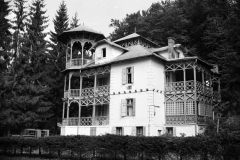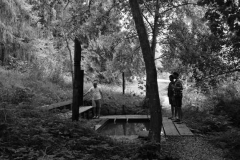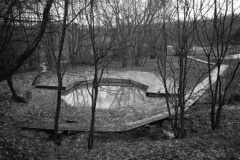Only from Clean Sources?
The Limits of Architecture and Use of Space in Szekler Baths
Text: Sarolta Rab
The mountain spas of Transylvania, just like other prominent natural environments of Central-Eastern Europe, were built and became widely known in the civilizing 19th century. Although in a dilapidated state, their architectural heritage of the time, the promenades, pavilions, villas and baths still survive in the larger spa towns. While the latter continued to develop, the area is likely to have had a number of smaller and larger private baths serving families or small communities, which have not survived. In the 2000s, small-scale, natural baths complexes began to be built as popular baths, on the initiative of outside bodies, on the outskirts of settlements and along tourist routes. Since, unlike the civil baths, the architecture of the vernacular baths was precarious, often just a naturally formed pit with no or minimal architectural intervention, the ones built today are free-standing spa-tial constructions of the former baths that are preserved in the memory of the locals. The structures, made of ecological materials, are a distinctive landscape architectural fusion of local building tech-niques and similar international designs. Their culture of use is still evolving. The aim is to map this architecturally under-researched zone at the frontier of the profession, together with the associated literature, from the perspective of the relationship with landscape, local materials, technology and community traditions.





